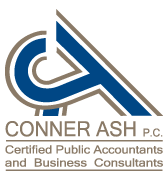
As 2025 winds down, tax season looms, and focusing on compliance and documentation is crucial for a smooth filing process. By prioritizing organized records, timely estimated tax payments, and awareness of tax law changes, you can avoid penalties and potentially reduce your tax burden. Here’s what you need to know to stay on track this November and December.
KEEP DETAILED RECORDS FOR DEDUCTIBLE EXPENSES
Accurate documentation is the foundation of claiming tax deductions effectively. For medical expenses, retain receipts for doctor visits and prescriptions. Business owners should maintain records of expenses like office supplies, travel costs, or equipment purchases to substantiate deductions. If you claim mileage, a detailed log with dates, destinations, and the purpose of each business trip is essential.
Consider using tools like QuickBooks or MileIQ to simplify tracking and ensure compliance with IRS requirements. Well-organized records not only support your deductions but also make the filing process more efficient.
MEET ESTIMATED TAX PAYMENT DEADLINES
For self-employed individuals, freelancers, or those with significant investment income, staying on top of estimated tax payments is critical. The fourth-quarter payment for 2025 is due January 15, 2026, and missing it could result in penalties. Review your year-to-date income and withholding to calculate the correct payment amount.
Consulting with a tax professional can help you estimate your tax liability accurately, ensuring you avoid underpayment issues when filing your return.
STAY INFORMED ON TAX LAW CHANGES
Tax laws are constantly evolving, and 2025 introduces updates through the One Big Beautiful Bill Act to deduction limits, credits, and reporting requirements that could impact your filing. Staying informed about these changes ensures you remain compliant and can take advantage of new opportunities to optimize your tax outcome.
Work with your tax professional to review your records, confirm payment schedules, and adapt to any regulatory updates. By taking these steps now, you’ll set yourself up for a stress-free and successful tax season.



